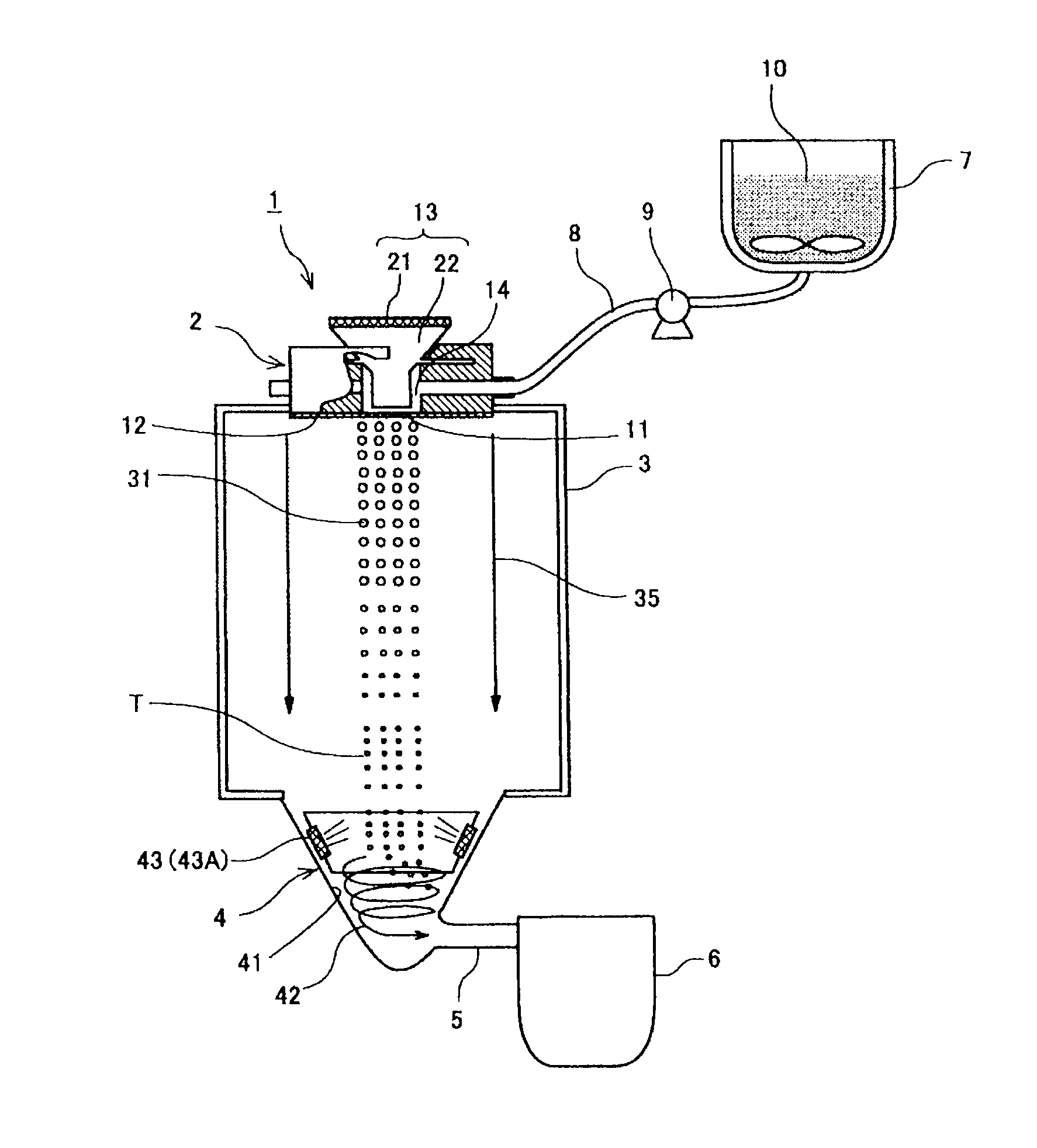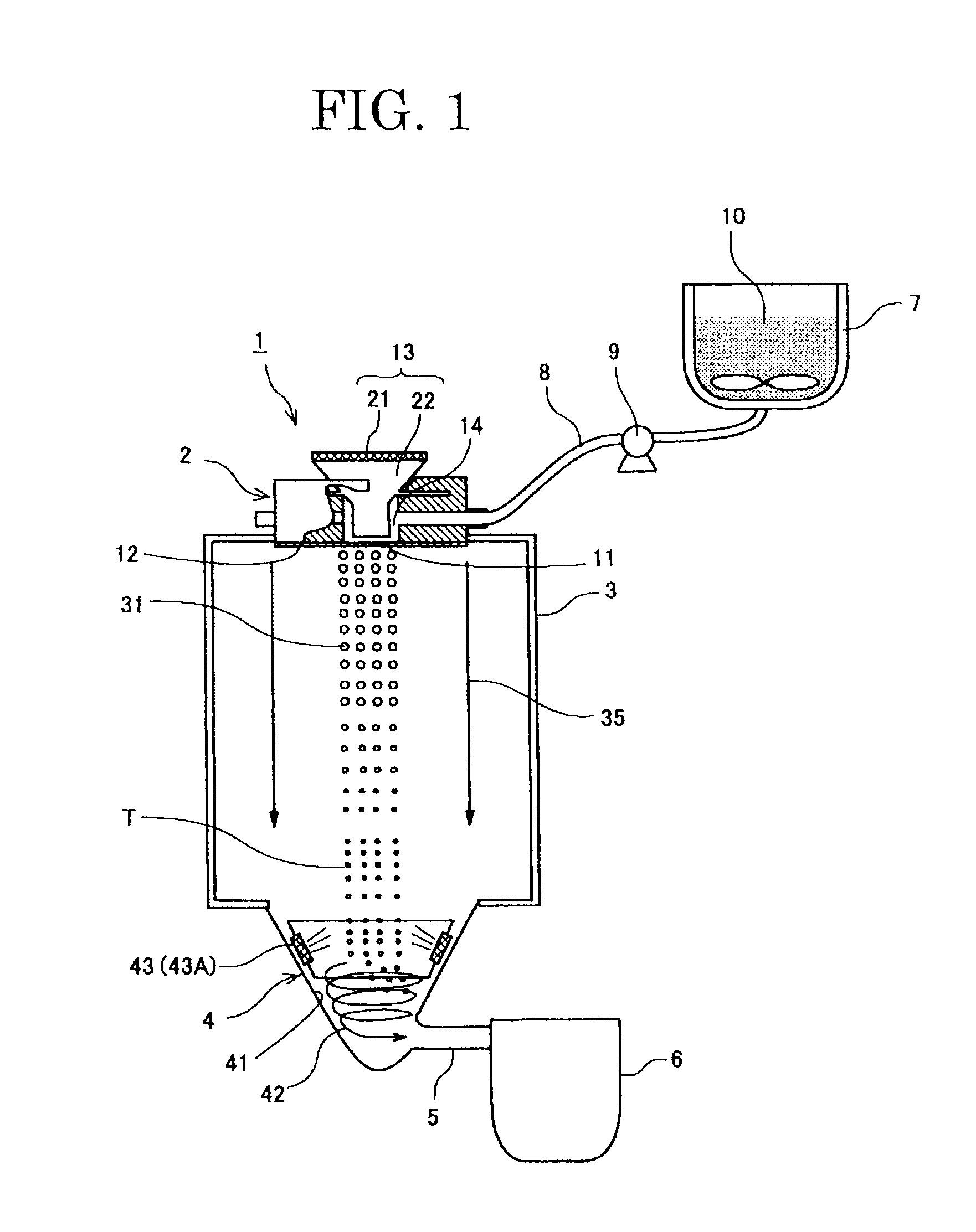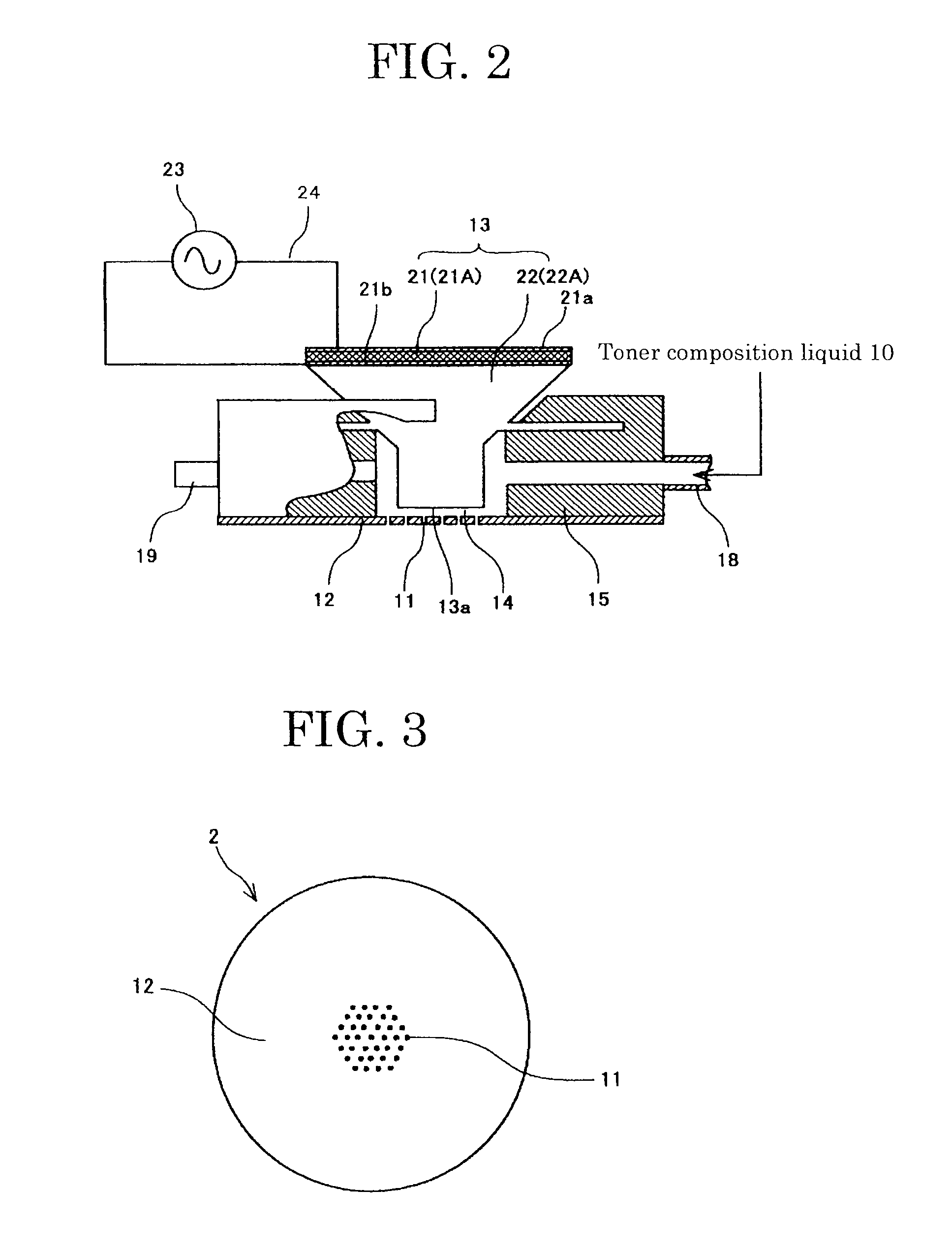Toner, method for producing toner, and developer
a technology of toner and developer, applied in the field of toner, method for producing toner, and developer, can solve the problems of reducing the chargeability and environmental stability, low productivity, and unsatisfactory production methods of polymerization toner, and achieves excellent low-temperature fixing properties, easy control, and variation in shape and surface structure.
- Summary
- Abstract
- Description
- Claims
- Application Information
AI Technical Summary
Benefits of technology
Problems solved by technology
Method used
Image
Examples
example 1
-Preparation of Colorant Dispersion-
[0273]First, a dispersion of carbon black (colorant) was prepared.
[0274]Specifically, carbon black (Regal 400, product of Cabot Corporation) (20 parts by mass) and a pigment dispersant (AJISPER PB821, product of Ajinomoto Fin-Techno Co., Inc.) (2 parts by mass) were primarily dispersed in ethyl acetate (78 parts by mass) using a mixer having an impeller.
[0275]The resultant primary dispersion was more finely dispersed through application of strong shearing force using the DYNO-MILL (product of Shinmaru Enterprises Corporation) to prepare a secondary dispersion containing no aggregates. The resultant secondary dispersion was caused to pass through a PTFE filter having a pore size of 0.45 μm to prepare a dispersion containing submicron particles.
-Preparation of Dispersion Containing Resin and Wax-
[0276]A container equipped with an impeller and a thermometer was charged with a polyester resin (binder resin) (mass average molecular weight: 20,000) (186...
example 2
[0292]The procedure of Example 1 was repeated, except that the drying conditions were changed as follows, to thereby produce toner b and a developer.
[Drying Conditions]
[0293]Flow rate of dry air: nitrogen gas for the primary step: 410 L / min (velocity: 87 m / sec); partial pressure of ethyl acetate: ⅓ (with respect to saturated vapor pressure of ethyl acetate); temperature: 47° C.
[0294]Flow rate of dry air: nitrogen gas for the secondary step: 1,500 L / min; partial pressure of ethyl acetate: 0; temperature: 60° C.
example 3
[0295]The procedure of Example 1 was repeated, except that the drying conditions were changed as follows, to thereby produce toner c and a developer.
[Drying Conditions]
[0296]Flow rate of dry air: nitrogen gas for the primary step: 145 L / min (velocity: 30 m / sec); partial pressure of ethyl acetate: 1 / 10 (with respect to saturated vapor pressure of ethyl acetate); temperature: is 25° C.
[0297]Flow rate of dry air: nitrogen gas for the secondary step: 300 L / min; partial pressure of ethyl acetate: 0; temperature: 60° C.
PUM
 Login to View More
Login to View More Abstract
Description
Claims
Application Information
 Login to View More
Login to View More - R&D
- Intellectual Property
- Life Sciences
- Materials
- Tech Scout
- Unparalleled Data Quality
- Higher Quality Content
- 60% Fewer Hallucinations
Browse by: Latest US Patents, China's latest patents, Technical Efficacy Thesaurus, Application Domain, Technology Topic, Popular Technical Reports.
© 2025 PatSnap. All rights reserved.Legal|Privacy policy|Modern Slavery Act Transparency Statement|Sitemap|About US| Contact US: help@patsnap.com



